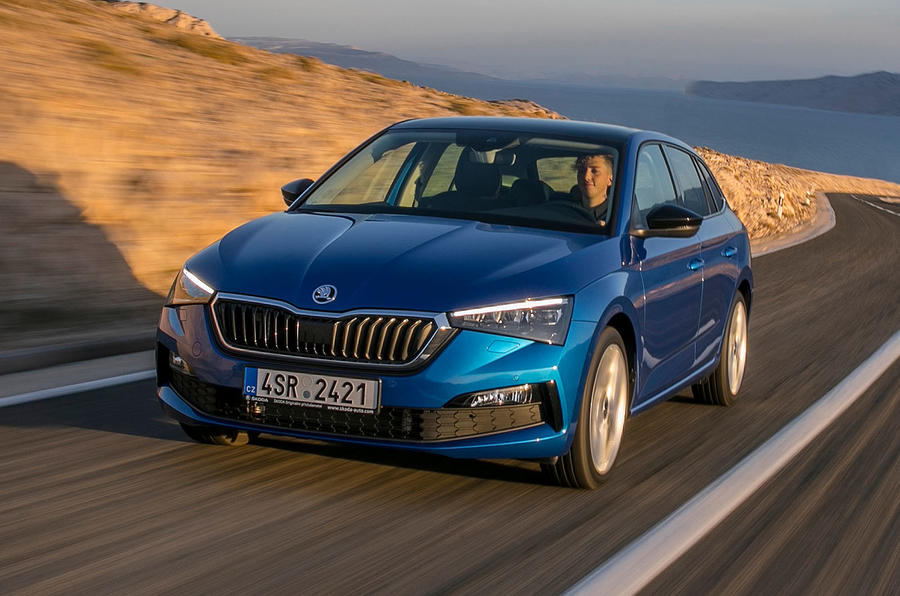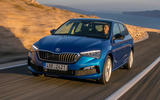What is it?
The Scala is a big play from Skoda: a Focus-sized, Golf-shaped family hatchback that slots slap-bang into the two-box mould of Europe’s most popular segment.
The brand has actually been here before, but Skoda the old Rapid looked achingly bland, and rather than borrowing VW Group’s MQB platform, its underpinnings were shared with the Fabia, with the same basic torsion beam rear axle.
The Scala now benefits from the more sophisticated MQB, though because Skoda equips only its more powerful models with expensive multi-link rear suspension, there’s still a good ol' torsion beam at the back. A mistake? We'll see. Up front it's a typical MacPherson strut set-up, and while we’re at it, Skoda is building only five-door bodies for the Scala and, for now, they’ll all be front-driven.
But this car is also meant to represent a new high watermark for Skoda’s design language, which is why it gets scrolling rear indicators (on top-spec SE L trim), LED head and tail lights (fully, but again only if you pay more for SE L), and a Porsche-style ‘SKODA’ written across its bootlid. Sharp creases abound, as does the dark exterior surfacing that has become increasingly fashionable among the European brands. In fact, in the tightly defined world of mass-produced cars, the Scala is impressively faithful to the Vision RS concept, so credit is due for that.
The engine line-up comprises a selection of VW Group’s transversely mounted TDI and TSI units, all of either three or four cylinders. A 1.0-litre three-cylinder petrol is available with 94bhp or 113bhp, while the four-cylinder 1.5-litre TSI driven here tops the range with 148bhp. The only diesel is a 1.6-litre with 114bhp, and depending on which engine you choose, Skoda is offering either five or six-speed manual gearboxes or a seven-speed dual-clutcher. A 1.0-litre 89bhp version powered by natural gas is due at the end of 2019, though whether or not it will be offered in the UK is unknown.


























































Join the debate
Add your comment
Maestro
Skoda makes a Maestro. It should have a talking dashboard "your DSG has failed", "your TSI has failed", "your PCP payment is overdue"
All plastics are the same
T-Roc - The fascia top is hard and slightly shiny, and in a market where even a Nissan Micra gets a soft-touch slush moulding, that's a little surprising.
A1 - For those accustomed to finding Audis with the most solid-feeling interiors in the class, the door cards and dashboard plastics might come as a bit of a surprise. Surfaces at hand and under elbow tap hollow and harsh, which is unexpectedly disappointing
Fascinating...
...that the Skoda Scala gets three pages of (admittedly, mixed) comments and the facelifted* BMW 7-Series gets not a single word, apart from the usual annoying spammers, of course.
* By Jocelyn Wildenstein's plastic surgeon, apparently.